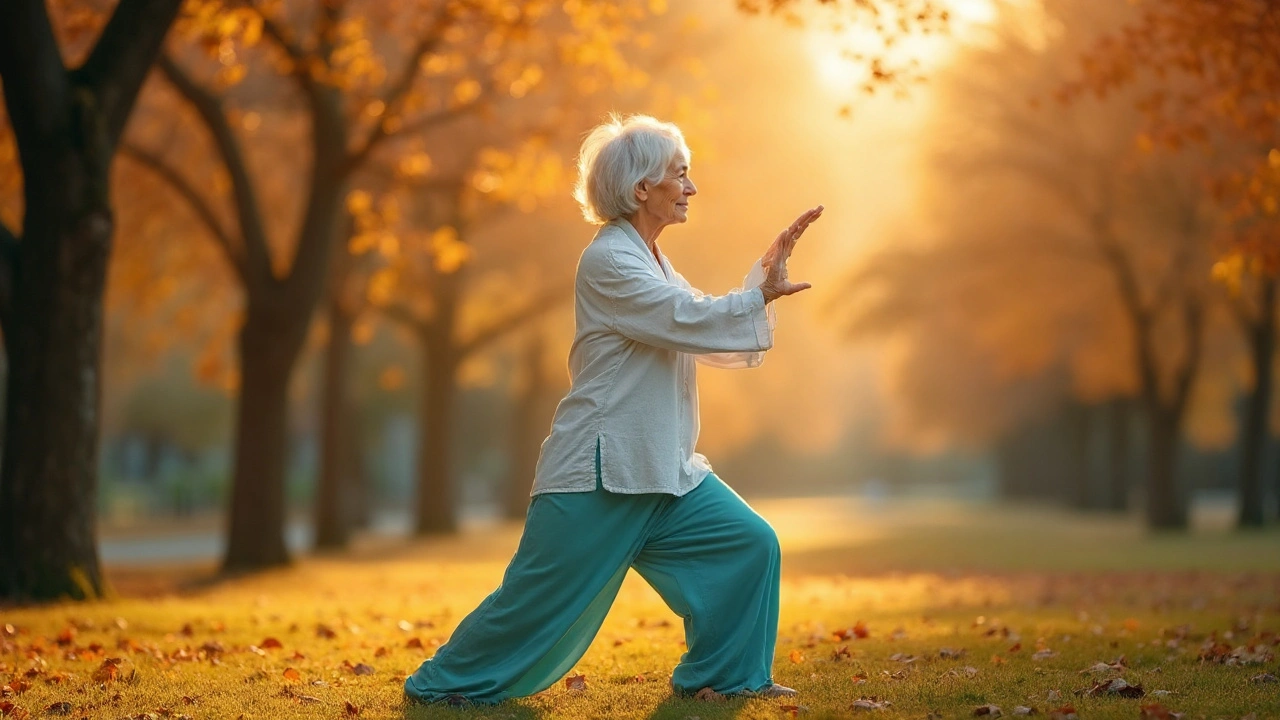
How Tai Chi Helps Osteoporosis Patients Boost Bone Health and Prevent Falls
Discover how Tai Chi improves bone density, balance, and overall health for osteoporosis patients. Learn the science, practical tips, and comparisons with other exercises.
Ever wonder why a minor fall can leave an older adult with a broken hip? That’s often because of osteoporosis, a condition where bones become porous and fragile. It’s not just an old‑people problem—anyone with low calcium, little exercise, or certain medicines can develop it. Knowing the warning signs and practical ways to protect your skeleton can make a huge difference.
Osteoporosis means the bone tissue loses density faster than the body can replace it. Think of a sponge that’s been squeezed out of shape; the more porous it gets, the easier it cracks. A bone‑density scan (DEXA) can spot the loss before a fracture happens. Common risk factors include age, menopause, smoking, heavy alcohol use, and a family history of broken bones.
The disease usually shows up silently. Most people don’t feel any pain until a fracture occurs—often in the spine, hip, or wrist. When a spinal fracture happens, it can cause a hunched posture and chronic back pain. Recognizing early signs, like frequent low‑impact injuries, helps you act before serious damage.
First, get enough calcium. Dairy, leafy greens, fortified plant milks, and canned fish with bones all pack a calcium punch. Aim for about 1,000 mg daily if you’re under 50, and 1,200 mg after that. Vitamin D is the partner that helps your body absorb calcium, so sunlight exposure and a supplement of 800‑1,000 IU per day are smart moves.
Second, move your body. Weight‑bearing activities—walking, dancing, light jogging—stress the bones just enough to signal them to rebuild. Resistance training with bands or light weights adds extra strength. Even a 30‑minute walk most days can slow bone loss.
Third, talk to a doctor about medication if you’re at high risk. Drugs like bisphosphonates, denosumab, or selective estrogen‑receptor modulators have shown to reduce fracture rates. Your doctor will weigh benefits against possible side effects, such as stomach irritation or rare bone infections.
Finally, avoid habits that speed up bone weakening. Cut back on cigarettes, limit alcohol to one drink a day, and stay clear of excessive caffeine, which can leach calcium from bones.
Putting these steps together—adequate calcium and vitamin D, regular weight‑bearing exercise, medical check‑ups, and healthy habits—creates a solid defense against osteoporosis. If you already have the condition, the same tactics can help keep existing bone loss from getting worse and lower the chance of a painful fracture.
Stay proactive: schedule a bone‑density test if you’re over 50 or have risk factors, and keep the conversation open with your healthcare team. Small, consistent changes add up, and your bones will thank you for the extra care.

Discover how Tai Chi improves bone density, balance, and overall health for osteoporosis patients. Learn the science, practical tips, and comparisons with other exercises.